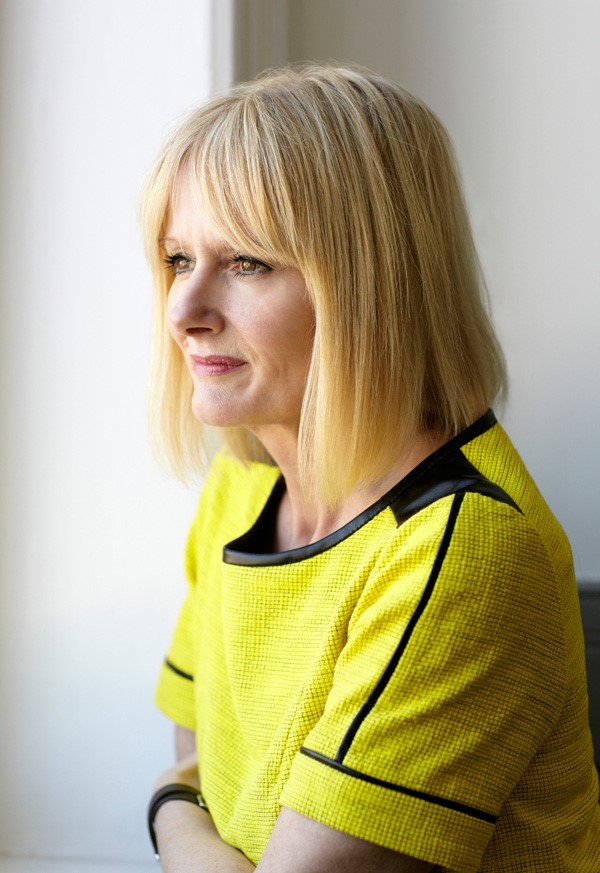Every Friday night Jane Shepherdson, CEO of Whistles leaves the airy Victorian townhouse in North London that is Whistles HQ and heads to a grimy Hoxton studio to practice the flying trapeze. She grins when she tells me this, “There’s something
Every Friday night Jane Shepherdson, CEO of Whistles leaves the airy Victorian townhouse in North London that is Whistles HQ and heads to a grimy Hoxton studio to practice the flying trapeze. She grins when she tells me this, “There’s something about swinging on a trapeze and just throwing yourself into a backwards somersault, you can’t think of anything. I think if I had it when I was a child, I’d be in the circus by now! I really love it.”
While the image of Shepherdson – with her chic bob and immaculately tailored clothes flying through the air is an indelible one; you could say it pales in comparison with the flying leap into the unknown she undertook when she moved from the gargantuan Topshop to the relatively unknown Whistles back in 2008. In her 20-year tenure at Topshop during which she rose through the ranks from buyer to brand director, it’s no understatement to say that Shepherdson helped change the way women buy and wear fashion. Take any style icon of today from Alexa Chung to Kate Moss and their effortless mix of high fashion and high street and you can trace a line directly from Shepherdson’s influence. She took a cheap teenage brand and transformed it into the most forward-looking, stylish and prescient retailer on the high street today. As she remembers it, “At the time the high street was of quite low standards – service was terrible, shops were pretty awful and actually that was not enough.” Her solution? “We thought we should be the fashion leader, nothing else. Let’s have the most directional collections and work with designers and go for that space.” She introduced designer collaborations – almost a dime a dozen these days but a radical notion back then. She recalls, “We had to persuade Hussein Chalayan to work with us. He was reticent to begin with but it turned out so well. And then we realised you could push it and push it and then you’re top end of what you’re selling. It could be amazingly directional and it kept you moving forward.”
"At Whistles we like to call ourselves the thinking women’s brand. It’s about independent women who are going to look strong and powerful. We’re all feminists here."
When she resigned in 2006, there was a media furore fuelled by speculation that Shepherdson had clashed with her boss Phillip Green over the hiring of Kate Moss to design her own range. She rolls her eyes at these old rumours. “Everybody wants a story about something don’t they? The truth is that I’d been there for far too long and you kind of think, 'I’ve done this'.” Her next step surprised many – becoming CEO of Whistles, an upmarket British label founded by Lucille Lewin in 1976. In steady decline after being bought and sold a few times, Shepherdson wanted to bring it back to its glory days when it championed nascent designers like Dries Van Noten. “I remember what it was when I was a lot younger. It was aspirational and unexpected. The Whistles girl was quite cool, independent and knew what she wanted. She understood fashion and how to put it together. It was a magpie approach to putting a look together yourself. We wanted to get back to something similar to that.” For Shepherdson, the Whistles girl was no abstract muse, but a working woman with real needs, as epitomised by the Belgian beauty Anouck Lepere in the current S/S campaign. She coos, “I think Anouck’s perfect – she’s a bit older, confident, chic and exudes that effortlessness.”
Unlike a brand like J. Crew whose preppy, kooky look seems almost an extension of the personal wardrobe of its larger-than-life creative director, Jenna Lyons; Shepherdson confides that her own personal style veers to the more leftfield of Whistles’. She confides, “I like to think it’s slightly rock chic and androgynous. But it isn’t commercial enough.” Her midas touch has once again worked gangbusters though with women (and a certain Duchess of Cambridge) embracing its elegant yet edgy, cool and modern aesthetic which saw the company posting profits and sales up year upon year. She puts this down to the label’s focus on empowering women, “We’re quite clear that it is a brand run mostly by women and for women. We like to call ourselves the thinking women’s brand. It’s about independent women who are going to look strong and powerful. We’re all feminists here.”
If reshaping the British high street and nurturing new designer talent through her role at the CFE weren’t enough; she’s understandably proud of what she’s accomplished at Whistles. “I like it – I think we did a good job. We’ve made it into something. This definitely isn’t fast fashion but something that lasts. There’s a real building here. I love that there is a continuity of handwriting that makes it work.”
